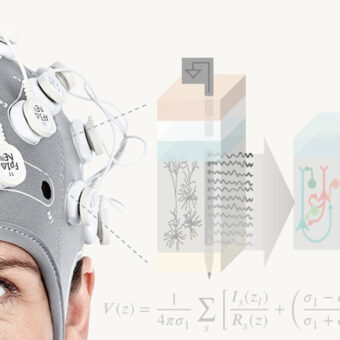Nature has a beautiful tendency to coordinate things. If two pendulum clocks are hanging from the same beam, they start moving in the same way. In a similar way, women that spend time together have a tendency to synchronize their menstrual cycles, or fireflies in the woods that are flashing synchronously. Many researchers have tried to investigate the reason for the fireflies’ synchronization, one possibility that I like is that males are flashing in various frequencies to attract females, while the latter are hidden in the woods until they find an ‘’interesting’’ male so they start flashing at the same frequency as the male.
Apart from the physical world, synchronization phenomena have also been observed in the psychological world. Carl Jung observed that internal processes manifested in dreams could synchronize with external situations manifested in the material world, which he called ‘’synchronicity’’. In his book Synchronicity (1952) he provides an example with one of his patients who had dreamed the night before that someone had given her a golden scarab, and while at Jung’s office the next day, a scarab appeared outside his window, which he took and gave to her.
In the biological world, the most famous example of synchronization refers to cardiorespiratory coupling, according to which the respiration pattern synchronizes with the heart rate, introducing a phenomenon called respiratory sinus arrhythmia, in which the R-R interval of the electrocardiogram (ECG) is shortened during inspiration and prolonged during expiration. Moreover, recent evidence from neuroscience and psychology supports the idea of underlying interactions during emotional processes. In particular, brain activation is associated with peripheral and other visceral responses during emotional processes, and synchronization phenomena of various subsystems of the organism seem to occur when experiencing emotions.
So what exactly is synchronization and how is it defined? Are there different notions of synchronization? Typically synchronization refers to a process during which two or more dynamical systems adjust some of their properties to a common behavior due to strong or weak coupling. The stricter way of using the concept of synchronization refers to ‘’complete’’ or ‘’identical’’ synchronization, and describes the dynamics of two (or more) systems that move along identical state-space orbits [1]. However, this is obviously not the case for systems that are not identical, which leads to the need of adopting looser concepts of synchronization. Some of these concepts are described below.
Phase synchronization refers to a state wherein the phases of the systems are locked even though their amplitudes may be random. For instance, the women’s menstrual cycle adjustments, as well as the synchronization across fireflies, fall in to this category. Phase synchronization has been also observed between heart rate and respiration, and is typically displayed using the cardiorespiratory synchrogram [2]. Phase synchronization between heart rate and respiration seems to decrease while people are exposed to neutral pictures, and to increase with highly exciting pictures [3].
Generalized synchronization, on the other hand, refers to interdependencies in the state space of the systems, and quantifies how neighboring state vectors of one state space map into the other [4]. Generalized synchronization between electroencephalography (EEG) and respiration also seems to be related to emotional processes.
Another concept of synchronization refers to the interaction of oscillators with different frequencies, in a way such that the phase of a low-frequency oscillator synchronizes with the amplitude of a high-frequency oscillator, a process known as Phase Amplitude Coupling (PAC) [5]. PAC has been explored between EEG and electrodermal activity, i.e., between the central nervous system and the peripheral nervous system, and it was revealed that the synchronization between brain and periphery increases when strong emotions occur and decreases when neutral emotions occur, which is in line with the famous appraisal theory of emotions [6].
…And these are some of the many notions and examples of synchronization that we experience in our ordinary life, some more and others less often.
If you feel like it, observe and have fun in your everyday life: notice how various phenomena tend to synchronize and see into which synchronization category they fall. Do you think there is a synchronization pattern, of the three discussed above, which is more likely to be observed than the others?
References:
- Fujisaka and T. Yamada, Stability theory of synchronized motion in coupled-oscillator systems, Progress of Theoretical Physics, vol. 69, no. 1, pp. 32-47, 1983.
- Rosenblum, A. Pikovsky, J. Kurths, C. Schafer, and P. A. Tass, Phase synchronization: from theory to data analysis, Handbook of biological physics, vol. 4, pp. 279-321, 2001.
- Valenza, A. Lanata, and E. P. Scilingo, Oscillations of heart rate and respiration synchronize during affective visual stimulation. Information Technology in Biomedicine, IEEE Transactions on, vol. 16, no. 4, pp. 683-690, 2012.
- Arnhold, P. Grassberger, K. Lehnertz, and C. Elger, A robust method for detecting interdependences: application to intracranially recorded EEG, Physica D: Nonlinear Phenomena, vol. 134, no. 4, pp. 419-430, 1999.
- Tort, R. Komorowski, H. Eichenbaum, and N. Kopell, Measuring phase amplitude coupling between neuronal oscillations of different frequencies, Journal of neurophysiology, vol. 104, no. 2, pp. 1195-1210, 2010.
- Kroupi, J.-M. Vesin and T. Ebrahimi. Phase-Amplitude Coupling between EEG and EDA while experiencing multimedia content. Humaine Association Conference on Affective Computing and Intelligent Interaction (ACII), 2013 IEEE, pp. 865-870.



